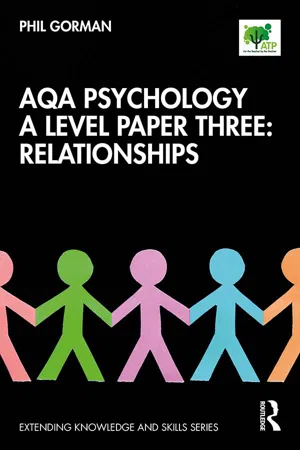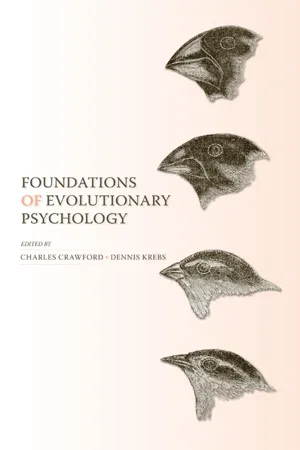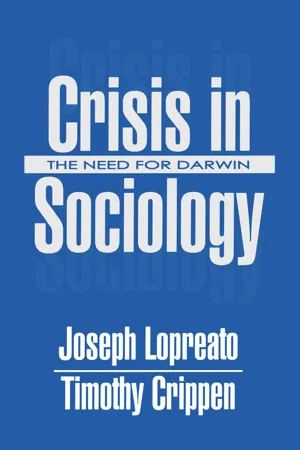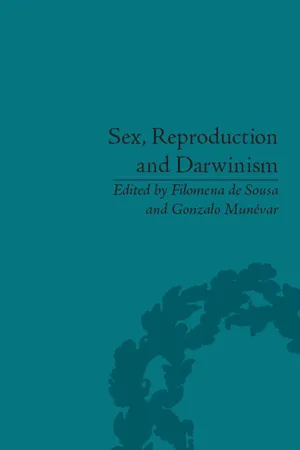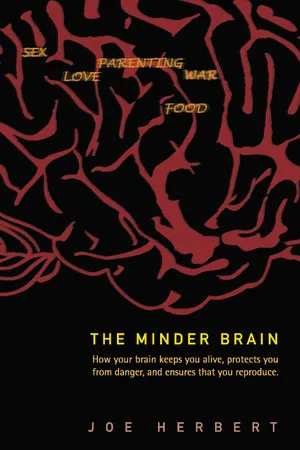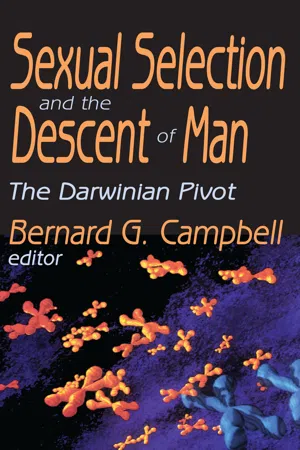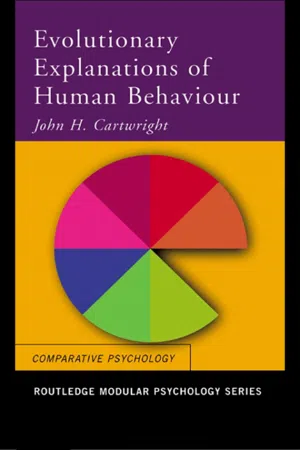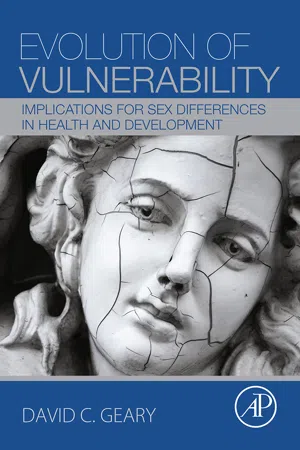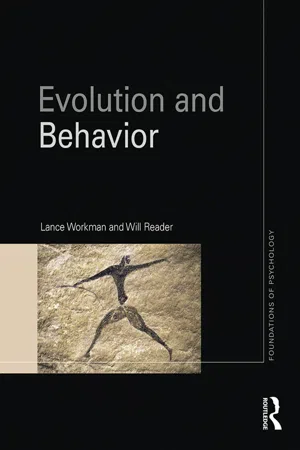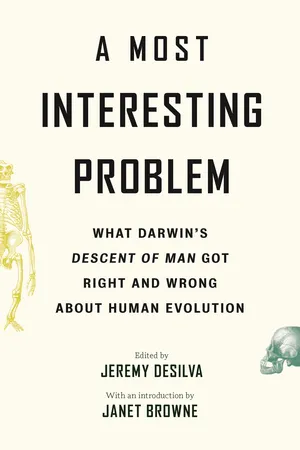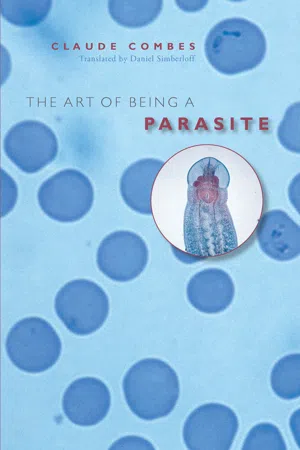Psychology
Sexual Selection
Sexual selection refers to the process by which certain traits or behaviors in a species evolve due to their role in increasing mating success. This can include traits that enhance attractiveness to potential mates or behaviors that improve the chances of successful reproduction. It is a key concept in understanding the evolution of mating strategies and sexual dimorphism in species.
Written by Perlego with AI-assistance
Related key terms
Related key terms
1 of 4
Related key terms
1 of 3
12 Key excerpts on "Sexual Selection"
- Phil Gorman(Author)
- 2020(Publication Date)
- Routledge(Publisher)
Chapter 2Spec checkSexual Selection and human reproductive behaviour
The evolutionary explanations for partner preferences, including the relationship between Sexual Selection and human reproductive behaviourAO1 (Knowledge and understanding): Sexual Selection and human reproductive behaviour
From an evolutionary point of view, species survive because they are able to adapt to their changing environmental conditions and this adaptation leads to beings that are better suited to their environment. It would be surprising therefore, if we didn’t assume thatevolutionhas something to do with the way in which weprocreateand make choices about whom we do and do not procreate with.In The Descent of Man (1981 [1871]), Darwin discusses the issue ofSexual Selectionand the way that certain features of species are not merely related tonatural selectionand therefore their ability to survive but also to increase their chances of obtaining a mate. The distinction is made betweenprimary sexual characteristics, such as gonads, which distinguish males from females and are directly related to procreation, andsecondary sexual characteristics, such as greater height, which distinguish one human from another and may provide an advantage in attracting a mate or in battling against other humans for a potential mate.In order to understand how Sexual Selection affects males and females differently, it is necessary to consider the concept ofsexual dimorphism, which relates to the different characteristics possessed by males and females and how these characteristics increase their chances of survival and procreation.An important part of the difference in the characteristics of males and females relates toanisogamy, which is the difference between the nature and number of male and female sex cells (gametes). Male gametes (sperm) are very small, highly mobile and constantly being produced in large numbers; the average male will produce over 500 billion sperm cells in a lifetime (shedding around 1 billion per month) and a healthy adult male can release around 200 million sperm cells in one ejaculation and each sperm cell has the potential to fertilise an egg, so each ejaculation has the potential to produce 200 million babies! Female gametes (eggs) on the other hand are much larger, immobile and produced in quite small numbers for a relatively short time period. Although women are born with 2 millionegg follicles- eBook - ePub
- Charles Crawford, Dennis Krebs(Authors)
- 2012(Publication Date)
- Psychology Press(Publisher)
This is because Sexual Selection involves individuals within one sex evolving traits that facilitate the winning of intrasexual competition to meet the mate preferences of the opposite sex and so, through interSexual Selection, to be chosen as mates over same-sex rivals. Anatomical examples of such traits include men’s greater body size and muscle mass (Geary, 1998) and women’s continually swollen breasts and greater fat deposits around the buttocks, thighs, and hips (Buss, 2004). The psychological traits that have been sexually selected in this way are the sex-specific mating strategies that facilitate the sexes in meeting the mate preferences of the opposite sex. Moreover, since the reproductive goals of the sexes are often in conflict, Sexual Selection has led to the evolution of additional sex-specific traits that facilitate the winning of intersexual competition, in which individuals within one sex attempt to impede the mating strategies of the opposite sex. A physiological example of such traits is the tendency for the size of the ejaculate deposited by a man into his partner to be directly related to his perception of the likelihood that his partner has recently been sexually unfaithful to him to reduce the probability that his partner will be successful in her attempt to be impregnated by another man (for a review, see Shackelford, Pound, & Goetz, 2005). Sexually selected psychological traits that have evolved in the context of intersexual competition consist of additional sex-specific mating strategies through which one sex attempts to impede the mating strategies of the other. The foregoing indicates that the different sex roles related to mating led to the evolution of sex-differentiated psychological traits - eBook - ePub
Crisis in Sociology
The Need for Darwin
- Joseph Lopreato, Timothy Crippen(Authors)
- 2018(Publication Date)
- Routledge(Publisher)
because of greater proficiency in securing mates.” Sexual Selection pertains to the struggle for genetic existence, not to selection, the process and end product of the struggle. Viewed as competition, Sexual Selection has become a very sharp tool among students of evolution and behavior, as we shall see in various contexts throughout this volume. It suggests that much animal behavior and appearance is adapted not so much to the problem of survival as to the task of securing adequate mates.Darwin’s later and much fuller discussion of Sexual Selection was eventually the proper catalyst for the more recent theoretical developments on the topic. His (1871:916) updated definition of Sexual Selection also provides various distinctions, as follows:Sexual Selection depends on the success of certain individuals over others of the same sex, in relation to the propagation of the species; whilst natural selection depends on the success of both sexes, at all ages, in relation to the general conditions of life. The sexual struggle is of two kinds; in the one it is between individuals of the same sex, generally the males, in order to drive away or kill their rivals…whilst in the other, the struggle is likewise between the individuals of the same sex, in order to excite or charm those of the opposite sex, generally the females, which…select the more agreeable partners.Evolutionists refer to the former type as intraSexual Selection and distinguish between a male-male subtype and a female-female one, with emphasis, in accord with Darwin himself, on the former. The second type refers mostly to a form of male-male competition, too (“the power to charm the females”), but Darwin saw it as being occasioned by females’ response to “charm,” and therefore it has come to be known as interSexual Selection or “female choice” (see, e.g., Cronin 1991: chaps. 8 –10 for this topic).In either case, the focus is on behavior (Trivers 1972: 137). It is our position in this volume that what is known as sociobiology (“evolutionary behavioral science,” “biocultural science,” “the study of evolution and behavior,” etc.) is that stage and branch of evolutionary science that has made the study of behavior its central feature, thereby building a bridge, however frail it may still be, between evolutionary biology and the other disciplines of human behavior. It is thus evident why Sexual Selection has become such a crucial feature of evolutionary studies. It obliges to more fully retrieve the components of behavior in what for Darwin himself (1859: chap. 3 ) was the basis of natural selection: the struggle for existence. Sexual Selection also directs attention to profound physio-anatomic differences between males and females and hence to a multiplicity of associated behavioral differences, as well as similarities, that may be expected to have evolved in the course of the evolution of a species, including Homo sapiens . Indeed, this focus has of late cast considerable light on why men and women are so unique, and uniquely rich, in so many aspects of their behavior and life in general. We shall return to this context especially in chapters 5 through 7 - eBook - ePub
- Filomena de Sousa(Author)
- 2015(Publication Date)
- Routledge(Publisher)
27 It must be noted that Sexual Selection cannot be considered as distinct from natural selection. Ethology and sociobiology provided evidence that such conspicuous traits as the male peacock’s tail have an adaptive significance. However, Sexual Selection is regarded as a special kind of mechanism involved in certain selective episodes that drive newly evolved traits.Darwin believed that Sexual Selection had profoundly marked the evolution of humans, and he stated that this process not only shaped physical traits, but also cognitive processes and behaviour patterns:He who admits the principle of Sexual Selection will be led to the remarkable conclusion that the nervous system not only regulates most of the existing functions of the body, but has indirectly influenced the progressive development of various bodily structures and of certain mental qualities. Courage, pugnacity, perseverance, strength and size of body, weapons of all kinds, musical organs, both vocal and instrumental, bright colours and ornamental appendages, have all been indirectly gained by the one sex or the other, through the exertion of choice, the influence of love and jealousy, and the appreciation of the beautiful in sound, colour or form; and these powers of the mind manifestly depend on the development of the brain.28Darwin believed that Sexual Selection played a major role in the evolution of humans and the divergence among distinct human populations. Mate preference is seen as being subject to genetic influence while much modelling of Sexual Selection assumes genetic influence acting on the preferred trait.In the present work we examine the merits and limitations of the proposal that altruistic traits evolved as a result of Sexual Selection under the special conditions of human evolution. A. Zahavi was the first one to suggest that altruistic traits might be linked to Sexual Selection. He proposed that altruism originated as a ‘handicap’ that evolved because it gave a ‘costly’ and therefore accurate ‘signal’ of the phenotypic and genetic quality of the altruist to others. The ‘direct phenotypic benefit’ mechanism envisages the sexually selected trait itself as offering an advantage to the female and her offspring.29 - eBook - ePub
The Minder Brain
How Your Brain Keeps You Alive, Protects You from Danger, and Ensures that You Reproduce
- Joe Herbert(Author)
- 2007(Publication Date)
- WSPC(Publisher)
Nobody, the American scientist Frank Beach once memorably declared, ever died from lack of sex. Beach made substantial contributions to our understanding of the way that hormones control sexual behaviour, but in this case he was articulating a real problem. If sex is not essential for the individual, how does the brain make it into an imperative demand? The ‘why’ is rather easier: if we did not bother with sex, there would be no human race to think about it. But sex is a biologically and socially costly business. We spend a great deal of time doing things that is related to it, or to parenthood, the biological consequence and rationale for sexual behaviour. But the payoff is less for the individual than for his/her species. So it is a different kind of demand from the business of daily survival, though the process of reproduction may have vast influence on survival itself. This is the reason that the brain uses many of the mechanisms to regulate sex that we might otherwise think of in connection with more obvious physiological demands such as getting enough food and water. We have a brain that not only ‘knows’ how to make us focus on sex when it matters, but also ensures that we do, not at all for our sake but for the preservation of future generations. The brain is being altruistic, but in so doing, it enables Darwinian selection. If there was no sexual behaviour, no urge to procreate, no brain mechanisms for selecting a mate and for seeing off the competition, no care of the young so that enough survived, then there would be no genetic material on which selection could act. And Sexual Selection (who mates with whom), the second Darwinian mechanism, relies totally on the brain. That means we need a brain that not only makes us breed, but makes the ‘right’ choice about with whom we breed.Sexual Selection and CompetitionThis form of selection (Sexual Selection) depends not on the struggle for existence in relation to other organic beings or external conditions, but on a struggle between the individuals of one sex, generally the males, for the possession of the other sex. The result is not death to the unsuccessful competitor, but few or no offspring. Sexual Selection is, therefore, less rigorous than natural selection. Generally, the most vigorous males, those which are best fitted for their places in nature, will leave most progeny. But in many cases victory depends not so much on general vigour as on having special weapons confined to the male sex. A hornless stag or spurless cock would have a poor chance of leaving numerous offspring. Sexual Selection, by always allowing the victor to breed, might surely give indomitable courage, length to the spur, and strength to the wing to strike with the spurred leg, in nearly the same manner as does the brutal cockfighter by the careful selection of his best cocks.Charles Darwin. (1872) The origin of species. Sixth ed. Ed. R E Leakey. (Hill and Wang, New York.)…The success which really counts is reproductive success. Those animals that leave relatively more offspring than others are ‘fitter’ or more successful. The ‘fittest’ animals are not necessarily the biggest, strongest, fastest, or sexually most attractive; merely those that leave the most progeny.D Pilbeam. (1970) The evolution of man. - eBook - ePub
- Patrick Spread(Author)
- 2012(Publication Date)
- Routledge(Publisher)
5 Sexual Selection and kinshipDarwin's Origin of Species deals mainly with a process of natural selection in which species survive in accordance with their adaptation to the prevailing environment. Only a brief account of Sexual Selection is given. Sexual Selection… depends, not on a struggle for existence, but on a struggle between the males for possession of the females; the result is not death to the unsuccessful competitor, but few or no offspring…. Generally, the most vigorous males, those which are best fitted for their places in nature, will leave most progeny.1A ‘law of battle’ prevails in which species use the weapons falling to them through natural selection – horns, spurs, teeth, etc. – to force out rivals and gain possession of females. Males of a species struggle for survival under natural selection, then compete further for possession of the females, by whom they transmit the variants that have enabled them to survive.According to Gillian Beer, Darwin came to feel he had underestimated or underexplained the power of Sexual Selection in the Origin , and wrote The Descent of Man, and Selection in Relation to Sex to make good the defciency.2 In the Descent , Sexual Selection is distinct from but complementary to natural selection. The strongest of a species win the struggle for existence in their environment; they also win the struggle for females. The qualities, or variations, leading to natural selection, including capacities for violence and the courage necessary to violence, are also the qualities, or variations, that prevail in the competition for females. Thus:We may conclude that the greater size, strength, courage, pugnacity, and energy of man, in comparison with woman, were acquired during primeval times, and have subsequently been augmented, chiefly through the contests of rival males for the possession of the females.3Darwin suggests that, among primeval men:… Sexual Selection has probably acted in the following manner…. The strongest and most vigorous men – those who could best defend and hunt for their families, who were provided with the best weapons and possessed the most property, such as a large number of dogs or other animals – would succeed in rearing a greater average number of offspring than the weaker and poorer members of the same tribe.4 - eBook - ePub
Sexual Selection and the Descent of Man
The Darwinian Pivot
- Bernard Campbell(Author)
- 2017(Publication Date)
- Routledge(Publisher)
11Sexual Selection in Human Evolution Ernst Caspari University of RochesterIntroduction
The nature and consequences of Sexual Selection have been thoroughly discussed in the preceding chapters. Even the topic of this chapter, the role which Sexual Selection may have played in human evolution, has been touched upon from different points of view earlier in this volume. If I attempt in this chapter to focus on the evolution of man, I shall have to refer to many facts and ideas mentioned and covered in the earlier papers. In order to avoid unnecessary redundancy, I shall frequently refer to papers in this volume rather than to the original literature, since much of the material pertinent to this discussion has already been quoted earlier. Only when specific problems are discussed will the original literature be referred to.I shall start out by discussing Sexual Selection in the Darwinian sense in its relation to the concept of “components of fitness” developed in modern population genetics. Then the evidence concerning mating patterns in man and in prehominids will be presented and discussed with respect to Sexual Selection. Finally, the possible roles of selection at the individual and the population level in the evolution of the social characters of man will be given some attention.Sexual Selection and Components of Fitness
The relation of Sexual Selection and natural selection has been discussed by Mayr in Chapter 5 of this volume. He points out that the evidence for the existence of Sexual Selection in the Darwinian sense has become over-whelming. On the other hand, numerous cases are quoted in which it is not clear whether they should be regarded as examples of natural or of Sexual Selection. In many cases, the superior vigor of males of one genotype is decisive for their reproductive success, as was shown for Drosophila by Sturtevant in 1915; but a role of the female in the choice of the male has been demonstrated in many instances, for example in the “rare male” effect mentioned by Mayr (Chapter 5 ) and by Ehrman (Chapter 6 ), again in Drosophila . In this organism, reproductive success of individual males may thus be determined both by sexual and by natural selection, and these two components of reproductive fitness are hard to disentangle by observation. Faugères, Petit & Thibout (1971) have shown that in certain crosses of Drosophila - eBook - ePub
- John H. Cartwright(Author)
- 2002(Publication Date)
- Routledge(Publisher)
3: Sexual Selection
Natural selection and Sexual Selection compared Inter- and intraSexual Selection Parental investment Potential reproductive rates: humans and other animals The operational sex ratio Consequences of Sexual Selection SummaryNatural selection and Sexual Selection compared
Darwin’s idea of natural selection was that animals should end up with physical and behavioural characteristics that allow them to perform well in the ordinary processes of life such as competing with their rivals, finding food, avoiding predators and finding a mate. Most features of plants and animals should, therefore, have some adaptive function in the struggle for existence. As noted earlier in relation to Figure 1.1 , the life and death of thousands of our ancestors should have ensured that by now our characteristics are finely tuned to growth, survival and reproduction. Nature should allow no extravagance or waste. So what about, for example, the spectacular train of the peacock? It does not help a peacock fly any faster or better. Neither is it used to fight rivals or deter predators—in fact, the main predator of peafowl, the tiger, seems particularly adept at pulling down peacocks by their tails. It would seem to be an irrelevance, a magnificent one to be sure, but nevertheless an encumbrance that should have been eliminated by natural selection long before now. Nor is the peacock’s tail an exception: many species of animals are characterised by one sex (usually the male) possessing some colourful adornment that serves no apparent function (or even seems dysfunctional), while the other sex, like the peahen, seems much more sensibly designed. Such features seem, at first glance, to challenge the power of natural selection to explain the behaviour of animals.When males and females differ like this in some physical characteristic, they are said to be sexually dimorphic - eBook - ePub
Evolution of Vulnerability
Implications for Sex Differences in Health and Development
- David C. Geary(Author)
- 2015(Publication Date)
- Academic Press(Publisher)
Chapter 2Sexual Selection and the Evolution of Vulnerability
Abstract
The dynamics of Sexual Selection (competition for mates and mate choice) and social selection (competition for resources other than mates) are overviewed with an emphasis on the evolutionary elaboration and condition-dependent expression of associated physical, behavioral, and brain and cognitive traits. These traits are more variable than naturally selected traits, and their expression is more easily disrupted by inbreeding, exposure to parasites, poor nutrition, social stress, and exposure to man-made toxins. Multiple examples across a wide range of species are provided to illustrate this condition-dependence and to lay the foundation for understanding human vulnerability.Keywords Sexual Selection Social selection Sex differences Male-male competition Female-female competition Female choice Male choice Reproductive rate Operational sex ratio Physical competition Behavioral competition Brain and cognitive competition Immunocompetence Nutritional stress Inbreeding Toxin Cellular respiration Endocrine disrupting compound Condition-dependent trait Reversed sex roles Spatial navigation Birdsong Parenting Genetic variance Lek HVC RA Handicap Honest indicator EDC Endocrine-disrupting compoundChapter OutlineSexual Selection12Compete for or Choose Among Mates? 13Rate of Reproduction 14Operational Sex Ratio 15Male-Male Competition 16Physical Competition 17Behavioral Competition - eBook - ePub
- Lance Workman, Will Reader(Authors)
- 2015(Publication Date)
- Routledge(Publisher)
3 Darwin’s second selective force Sexual Selection What this chapter will teach you How Darwin’s second evolutionary force–Sexual Selection–has been refined. The advantages and disadvantages of sexual and asexual reproduction. The Red Queen hypothesis to explain why sexual reproduction can be superior to asexual reproduction. How Sexual Selection has been used to help explain human intelligence and sex differences in aggression. In this chapter we return to Darwin’s second selective force– Sexual Selection –and consider why it is that many organisms use the bizarre form of reproduction that we call sex. We also present and explain the Darwinian lexicon of Sexual Selection theory. We then consider an influential hypothesis that relates Sexual Selection to the evolution of human language and intelligence. Finally, we consider how Sexual Selection theory has been used to help explain sex differences in aggressive behavior. Sexual Selection–From Darwin to the present You may recall from Chapter 1 that when Darwin considered the gaudy features of many male birds and mammals, such as the tail feathers of the peacock or the red face and “mane” of the male mandrill, he was not convinced that these augmentations could have arisen from natural selection. This is also true of the fact that the males of many species engage in more physical displays than the females (Darwin, 1871). The problem was that because natural selection was believed to lead to features that aid survival (see Chapter 1), how could characteristics that make individuals stand out so vividly to predators be sustained in a population? Surely, more drab males would have an advantage over the colorful, exhibitionist males in avoiding predators? In fact, while the notion that these features form an encumbrance to survival was mere (educated) speculation on Darwin’s part, today it is known that he was certainly right - eBook - ePub
A Most Interesting Problem
What Darwin’s Descent of Man Got Right and Wrong about Human Evolution
- Jeremy DeSilva(Author)
- 2021(Publication Date)
- Princeton University Press(Publisher)
Darwin’s theory of Sexual Selection was his explanation for the peacock’s tail and other courtship traits that were partners in the crime of seemingly reducing survivorship. This theory followed a three-step road map, similar to natural selection. First, unless there is perfect monogamy, there are often more males trying to mate than there are females willing to mate. Second, mating success is not random; the successful males have traits that enhance their ability to gain direct access either to females or to resources needed by females, or the males have traits that enhance their beauty, making them more attractive as mates. Third, these traits have a genetic component, resulting in traits that enhance mating success being disproportionally promulgated in subsequent generations.It was not difficult to resolve the conflict between natural selection and Sexual Selection. Traits evolve only if they are passed on to the next generation through mating, but animals can mate only if they survive. Thus, a male peacock with an abnormally short tail might survive quite well but never mate, while a male with an abnormally long tail might be quite attractive to females but likely would not live long enough to try out his tail. Thus, in many cases, there is a conflict between natural selection and Sexual Selection, and the traits that evolve strike some balance between survivorship and mating success.Sexual Selection Is Borne out of Sexual Conflict
Why is there a sex bias in sexually selected traits? Why is it typically the males that have to compete for females and not vice versa? Of course, there is a lot of variation in mating systems; in seahorses and pipefish the sex roles are reversed, and females compete for males; and in a larger number of species, such as sticklebacks and humans, there is mutual mate choice. But why are these mating systems the exception rather than the rule?The answer is as fundamental as can be imagined. Many of the differences between males and females, in almost all the species known to reproduce sexually, result from differences in gamete size. In humans and in most other animals, a female’s eggs are the largest cells in her body, while a male’s sperm are the smallest cells in his body. Females invest much more in their gametes than do males, even though males produce many more gametes. In humans, females have a few hundred eggs, while a male will produce a few billion sperm during his life. - eBook - ePub
- Claude Combes, Daniel Simberloff(Authors)
- 2020(Publication Date)
- University of Chicago Press(Publisher)
7 Sexual Selection and Parasitism How could animals choose resistant mates?WILLIAM HAMILTON AND MARLENE ZUK (1982)Sexual Selection The How of Sexual SelectionModern ideas about biological evolution rest on a few simple principles. The first is that it is not individuals but populations that evolve. This means that traits acquired during an individual’s life, such as calluses on the skin or hypertrophied muscles, are not passed on to descendants. Contrary to Lamarck, there is no inheritance of acquired characteristics. The second principle is that genetic information is not completely invariant from one generation to the next. Mutations create variation in populations: their individuals differ more or less from each other not only because of genetic recombination produced at meiosis but also because of new mutations. The third and last principle is that individuals undergo selective pressure. Confronted with the environment, some individuals have greater reproductive success than others. The result is that, over time, their genes spread in the population. Because new mutations arise routinely, the genetic structure of the population (the relative frequency of different genes) constantly changes. After many generations, individuals can differ noticeably from their ancestors in appearance, physiology, or behavior.Evolution therefore results from two equally indispensable processes: genetic variation, which results from changes at the genotype level, and natural selection, which differentiates among phenotypes.Selective pressures are the least controversial motor of evolution (among other possible motors, I have already mentioned global catastrophes). For example, if black mutants appear in a population of white moths, they will have an advantage if the environment (including the structures on which the moths rest) is dark. In fact, birds that eat moths detect white moths better in such a circumstance, because the white moths contrast more sharply than the dark ones with the environment. Conversely, the white moths have an advantage if the resting places are themselves light colored because it is then the black moths that are more readily seen and more frequently eaten. Beginning in the late nineteenth century, this type of selection pressure has been suggested as the explanation for the fact that the pepper moth became darker as industrial pollution darkened its resting places (such as tree trunks) in England. Some field experiments conducted in the mid- and late twentieth century to test the hypothesis were marred by errors and are contested (Hooper 2002). However, although the phenomenon of industrial melanism is doubtless more complicated than originally believed, none of the subsequent research undermines the basic reasoning about the role of differential predation by birds or the experimental demonstration that such predation occurs (Majerus 2003).
Index pages curate the most relevant extracts from our library of academic textbooks. They’ve been created using an in-house natural language model (NLM), each adding context and meaning to key research topics.
Explore more topic indexes
Explore more topic indexes
1 of 6
Explore more topic indexes
1 of 4
